#American History
Text
for God’s Sake, my dear General, take Care of Your Health, don’t devote Yourself So much to the Cabinet, while Your Habit of life Has from Your Young Years, Accostumed You to a constant Exercise. Your preservation is the life of Your friends, the Sallvation of Your Country—it is for You a Relligious duty Not to Neglect Any thing that May Concern Your Health—I beg You will let me oftener Hear from You
The Marquis de La Fayette to George Washington, August 23, 1790
“To George Washington from Lafayette, 23 August 1790,” Founders Online, National Archives, https://founders.archives.gov/documents/Washington/05-06-02-0146. [Original source: The Papers of George Washington, Presidential Series, vol. 6, 1 July 1790 – 30 November 1790, ed. Mark A. Mastromarino. Charlottesville: University Press of Virginia, 1996, pp. 315–319.] (03/26/2024)
#marquis de lafayette#la fayette#french history#american history#history#letter#founders online#george washington#1790
25 notes
·
View notes
Text
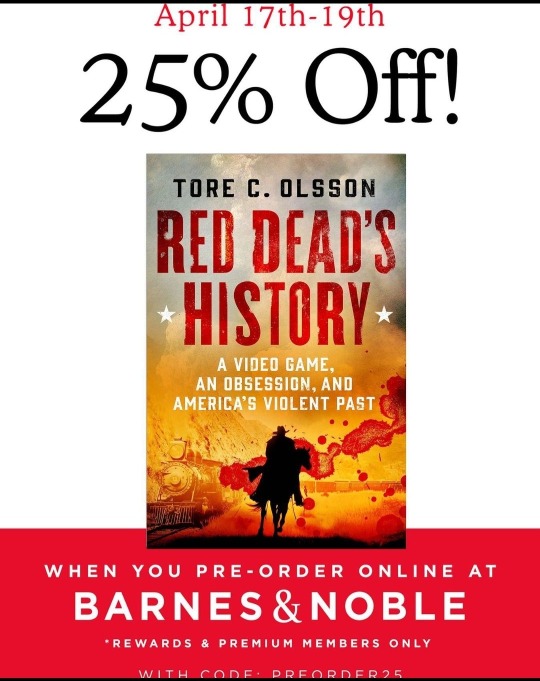
For a brief time, from April 17- 19, 2024, pre-order Red Dead's History from Barnes & Noble and receive a 25% discount! 🎉
Use code PREORDER25 at the time of checkout at Barnes & Noble, and place your pre-order today!
https://www.barnesandnoble.com/w/red-deads-history-tore-c-olsson/1143881700?ean=9781250287700
#Roger Clark#Rdr2#Red dead redemption 2#American history#1800s#roger's audiobooks#Audiobooks#roger clark audiobooks#western history
23 notes
·
View notes
Text
1963 Refrigerator 🤔
#pay attention#educate yourselves#educate yourself#knowledge is power#reeducate yourself#reeducate yourselves#think about it#think for yourselves#think for yourself#do your homework#do some research#do your own research#ask yourself questions#question everything#american history#history lesson
66K notes
·
View notes
Text
What i've been learning thru my research is that Lawn Culture and laws against "weeds" in America are deeply connected to anxieties about "undesirable" people.
I read this essay called "Controlling the Weed Nuisance in Turn-of-the-century American Cities" by Zachary J. S. Falck and it discusses how the late 1800's and early 1900's created ideal habitats for weeds with urban expansion, railroads, the colonization of more territory, and the like.
Around this time, laws requiring the destruction of "weeds" were passed in many American cities. These weedy plants were viewed as "filth" and literally disease-causing—in the 1880's in St. Louis, a newspaper reported that weeds infected school children with typhoid, diphtheria, and scarlet fever.
Weeds were also seen as "conducive to immorality" by promoting the presence of "tramps and idlers." People thought wild growing plants would "shelter" threatening criminals. Weeds were heavily associated with poverty and immortality. Panic about them spiked strongly after malaria and typhoid outbreaks.
To make things even wilder, one of the main weeds the legal turmoil and public anxiety centered upon was actually the sunflower. Milkweed was also a major "undesirable" weed and a major target of laws mandating the destruction of weeds.
The major explosion in weed-control law being put forth and enforced happened around 1905-1910. And I formed a hypothesis—I had this abrupt remembrance of something I studied in a history class in college. I thought to myself, I bet this coincides with a major wave of immigration to the USA.
Bingo. 1907 was the peak of European immigration. We must keep in mind that these people were not "white" in the exact way that is recognized today. From what I remember from my history classes, Eastern European people were very much feared as criminals and potential communists. Wikipedia elaborates that the Immigration Act of 1924 was meant to restrict Jewish, Slavic, and Italian people from entering the country, and that the major wave of immigration among them began in the 1890s. Almost perfectly coinciding with the "weed nuisance" panic. (The Immigration Act of 1917 also banned intellectually disabled people, gay people, anarchists, and people from Asia, except for Chinese people...who were only excluded because they were already banned since 1880.)
From this evidence, I would guess that our aesthetics and views about "weeds" emerged from the convergence of two things:
First, we were obliterating native ecosystems by colonizing them and violently displacing their caretakers, then running roughshod over them with poorly informed agricultural and horticultural techniques, as well as constructing lots of cities and railroads, creating the ideal circumstances for weeds.
Second, lots of immigrants were entering the country, and xenophobia and racism lent itself to fears of "criminals" "tramps" and other "undesirable" people, leading to a desire to forcefully impose order and push out the "Other." I am not inventing a connection—undesirable people and undesirable weeds were frequently compared in these times.
And this was at the very beginnings of the eugenics movement, wherein supposedly "inferior" and poor or racialized people were described in a manner much the same as "weeds," particularly supposedly "breeding" much faster than other people.
There is another connection that the essay doesn't bring up, but that is very clear to me. Weeds are in fact plants of the poor and of immigrants, because they are often medicinal and food plants for people on the margins, hanging out around human habitation like semi-domesticated cats around granaries in the ancient Near East.
My Appalachian ancestors ate pokeweed, Phytolacca americana. The plant is toxic, but poor people in the South would gather the plant's young leaves and boil them three times to get the poison out, then eat them as "poke salad." Pokeweed is a weed that grows readily on roadsides and in vacant lots.
In some parts of the world, it is grown as an ornamental plant for its huge, tropical-looking leaves and magenta stems. But my mom hates the stuff. "Cut that down," she says, "it makes us look like rednecks."
9K notes
·
View notes
Text
Historical house tours are so confusing. They’ll be like, “When we head upstairs, pay special attention to the Blue Room, where Colonel Thomas J. Shmoshington carved a suggestive message on the bedpost.”
And you’ll walk into a room with bright blue walls and be like, “Oh, I guess this is the Blue Room?”
And they’ll be like, “NO! This is the Red Room! It’s called the Red Room because of the red velvet curtains and canopy bed!” Then they take you into a white room with yellow floral wallpaper trim and go, “THIS is the Blue Room!”
And when you humbly ask why it’s called the Blue Room, they’ll scoff at you like you were born yesterday (rather than in 1789) and be like, “It’s called the Blue Room because it USED TO BE blue! The entire mansion is painstakingly restored to its appearance in the year 1812, which happens to fall during the two-year span in in which Abigail Shmaddison redid the room in white and yellow in a flight of fancy. After spending some time away in a sanitarium, she regained her senses and changed it back to blue. An archaeologist found an original scrap of the yellow wallpaper beneath 13 layers of paint and we were able to match it perfectly with this pattern, which was of course developed by Q.B. Zippitydoo & Sons in London and available for purchase only in 1812. Any more questions?”
So you hold your tongue until you enter a big green room that is so incredibly green that it can’t possibly be anything but the Green Room. It has acid green walls. It has bright green curtains. It has forest green tablecloths. There are ivy motifs carved in the ceiling. Cautiously, you venture, “So this is the Green Room?”
And they say, “NO! This is the parlor!”
14K notes
·
View notes
Text
Some historical context for Olrox
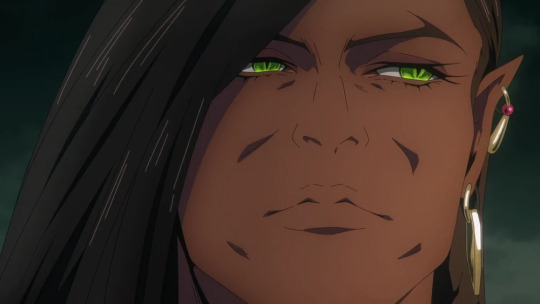
Okay, let me prephase this with one important message: Castlevania Nocturne made me really happy by making the plot all about colonialism, as colonialism and its fallout and how it influences us to this day is a topic that I am very passionate about. We do not talk enough about it. The US does not talk enough about it because it could make white people feel uncomfortable. And here in Germany we do not talk about it, because we act as if this had nothing to do with us at all.
But the show talks about it and I love it.
And I honestly also gotta say that I love that the BI_PoC character have a concrete cultural heritage. Olrox is Aztec, Annette is Yoruba, and Drolta is Egyptian. Other shows: Please take notes!
But let's talk Olrox, because he is so fucking interesting and amazing!
We know about him that he is Aztec and also that he is 250 years old. Or roughly that old by the time he kills Julia. Which would put either his birth or his turning somewhere around 1530.
Now, the fall of the Aztec Empire has a very exact date: August 13th, 1521. But you should keep in mind that this does not mean that on that day the Aztec's are extinct. To this day there is still 1,5 million people speaking Nahuatl, the language of the Aztecs, and preserving some of the Aztec cultural traditions. It was just that on that day the empire construct fell to Cortez and the Spaniad conquistadors and a lot of Aztecs went into exile to flee the genocide that Cortez was bringing upon them.
The question of course is: Was Olrox still human at this time or was he already a vampire? From his dialogue it is clear that he was at least alive and grown enough to remember the fall of the empire and the distruction Cortez and his men brought upon them. But you can bet it was very traumatic.
I also am assuming he was turned by a white man. Because so far my assumption is that vampirism is an old world thing that got brought to the new world through colonialism. (Mostly because in Dracula's court we do not see any new world vampires.)

Now, the other interesting thing is what he says about his dead lover. The one Julia killed. So, first the "town in Massachusetts" he speaks about is clearly Stockbridge. Which was the town in which many Mohicans have settled during the colonial times, as well as other people from the Iroquois Nations. Now, it should be noted that the Mohicans were not part of the Iroquois alliance and in fact went to war with the Iroquois, but by the time colonialism really geared up there was some cooperation between the Mohicans and Iroquois.
Due to this they were in an alliance with the Oneida (who were part of the Iroquois) by the time of the Revolutionary war. Now, the Revolutionary War created a lot of conflict between the Iroquois nations, because they did not agree which side they should fight on. Of course both sides promised that they could keep their land, but the Mohawk, Onondaga, Cayuga, and Seneca did not trust the colonists and hence sided with the British, while the Oneida and Tuscarora (and through them also the Mohicans) sided with the Colonists.
And the dead lover clearly was among those siding with the colonists. Now, a quick refresher for the non-Americans (and the Americans who slept to history class, which is understandable). The Revolutionary War lasted from April 19, 1775 to September 3, 1783 (which, yes, also means that Julia and Richter probably were in the US during the war the entire time and the "evil" Julia was fighting probably was linked to it). And of course we all know how it ended for the Indigenous people: The colonists won, countless Indigenous folks died on both sides, only to get booted of their land soon after. The Oneida und Mohicans were made to move westwards not soon after the war ended. So, yes, Olrox would have seen that happen.
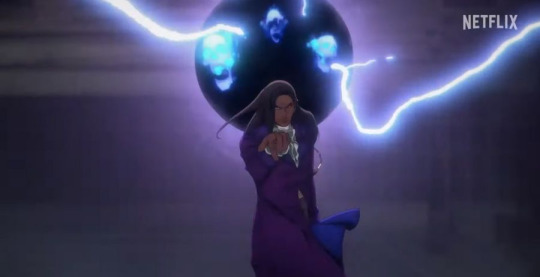
Now, an interesting thing in his dialogue was when Erzebet said: "We will create a new world." To which he replies: "I have heard that one before." And she says: "This time we are going to make it to last."
And the big question is to what this is refering. Is it refering to the colonialization or is it refering to the revolutionary war? Or something entirely different. In both cases it would be possible. And yes, the American Revolution definitely were claiming to create a new world. But was it that what he refered to or something else?
Well, never the less: Interesting character. Really good writing.
#castlevania#castlevania nocturne#castlevania netflix#castlevania nocturne spoilers#castlevania olrox#american history#history#colonialism#colonial history#aztec
4K notes
·
View notes
Text

On November 23, 1909, more than twenty thousand Jewish Yiddish-speaking immigrants, mostly young women in their teens and early twenties, launched an eleven-week general strike in New York’s shirtwaist industry. Dubbed the Uprising of the 20,000, it was the largest strike by women to date in American history. The young strikers’ courage, tenacity, and solidarity forced the predominantly male leadership in the “needle trades” and the American Federation of Labor to revise their entrenched prejudices against organizing women. The strikers won only a portion of their demands, but the uprising sparked five years of revolt that transformed the garment industry into one of the best-organized trades in the United States.
#jumblr#jewish#jews#judaism#nesyapost#jewish history#jewish reading#yiddish#Jewish women#American history#women's history#workers history#proletariat#1909#nyc#workers strike
1K notes
·
View notes
Text
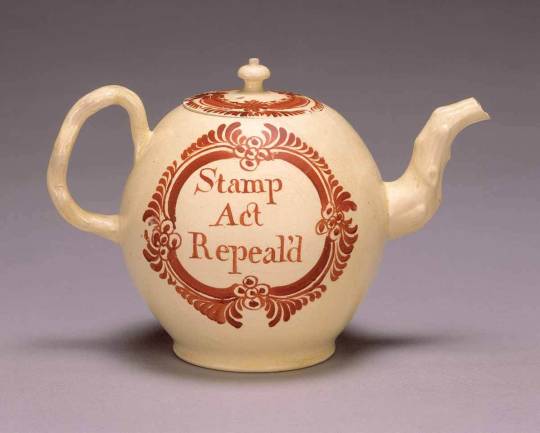
Teapot celebrating the repeal of the Stamp Act in 1766, Colonial United States
from The Peabody Essex Museum
752 notes
·
View notes
Text

For the ppl in the back!!
#black tumblr#black history#black literature#black excellence#black community#civil rights#black history is american history#civil rights movement#equality#equal rights#black lives matter#black pride#black people#equal#african slavery#american slavery#african american history#american history
2K notes
·
View notes
Text
Incredibly niche question for the niche question website, but I figure it's worth a shot:
Does anyone know anything about, or how I might go about learning, of American military presence in Germany between 1943 and 1963? Specifically Bavaria, and specifically American Indian personnel?
I'm trying to figure out the identity of a man who went AWOL about 60 years back- this isn't my usual area of expertise and I'm not quite sure where to start.
623 notes
·
View notes
Text
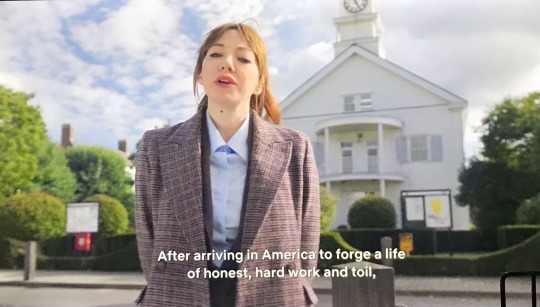

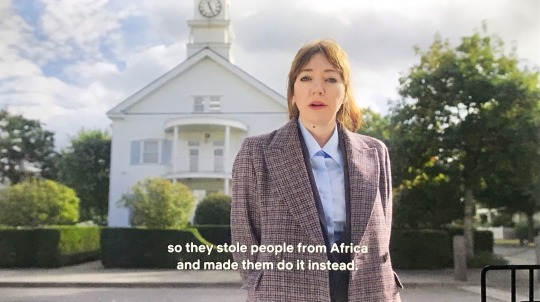

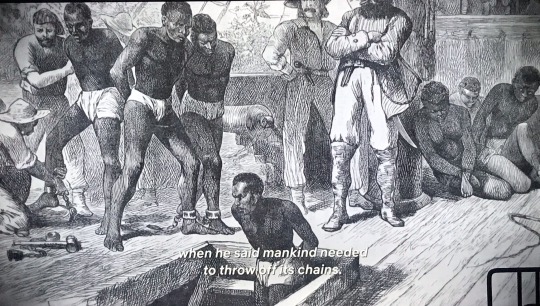



“After arriving in America to forge a life of honest, hard work and toil, many of these colonists realized they couldn’t be arsed, so they stole people from Africa and made them do it instead. You might think these were precisely the people Rousseau had been talking about when he said mankind needed to throw off their chains. But they weren’t. Like many humanists, he’d found a clever loophole. By not thinking of slaves as human, he was free to not give a shit.” - Philomena Cunk, “Cunk on Earth”
#philomena cunk#cunk on earth#jean jacques rousseau#slavery#colonialism#American history#european history#us history
4K notes
·
View notes
Text





Thomas Cole: The Course of Empire (1833–1836)
#thomas cole#hudson river school#the course of empire#art#art history#oil painting#american history#history#american artist#oil on canvas#dark academia#image description in alt#these are some of my favorite paintings
1K notes
·
View notes
Text
Old Lighters 🤔
#pay attention#educate yourselves#educate yourself#knowledge is power#reeducate yourself#reeducate yourselves#think about it#think for yourselves#think for yourself#do your homework#do some research#do your own research#ask yourself questions#question everything#old lighters#lighters#antique#history lesson#history#american history#world history#ancient history
18K notes
·
View notes
Text

Bruce Lee
535 notes
·
View notes
Text
On November 19, 1863, at the dedication of a military cemetery at Gettysburg, Pennsylvania, during the American Civil War, President Abraham Lincoln delivers one of the most memorable speeches in American history. #OnThisDay
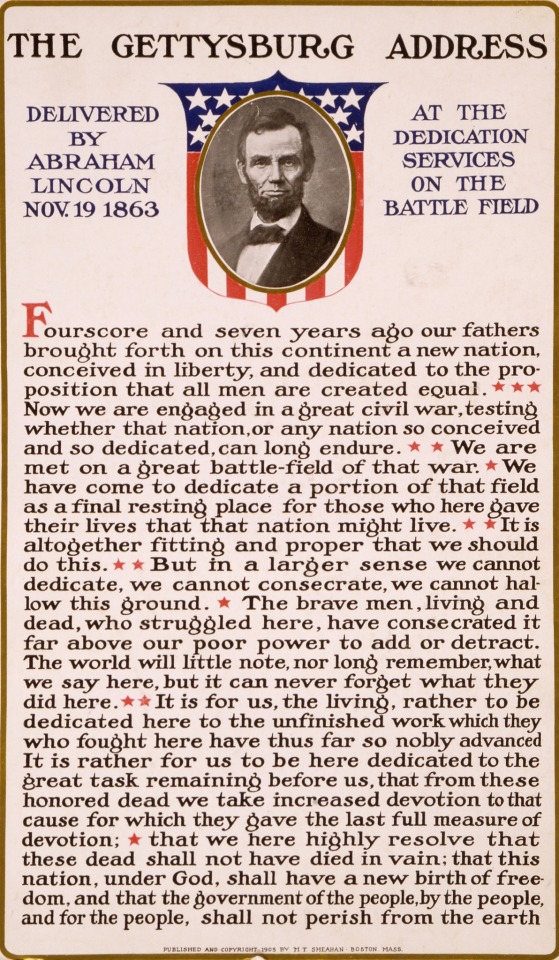
432 notes
·
View notes
Text

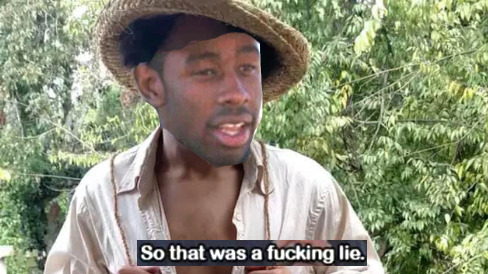
729 notes
·
View notes